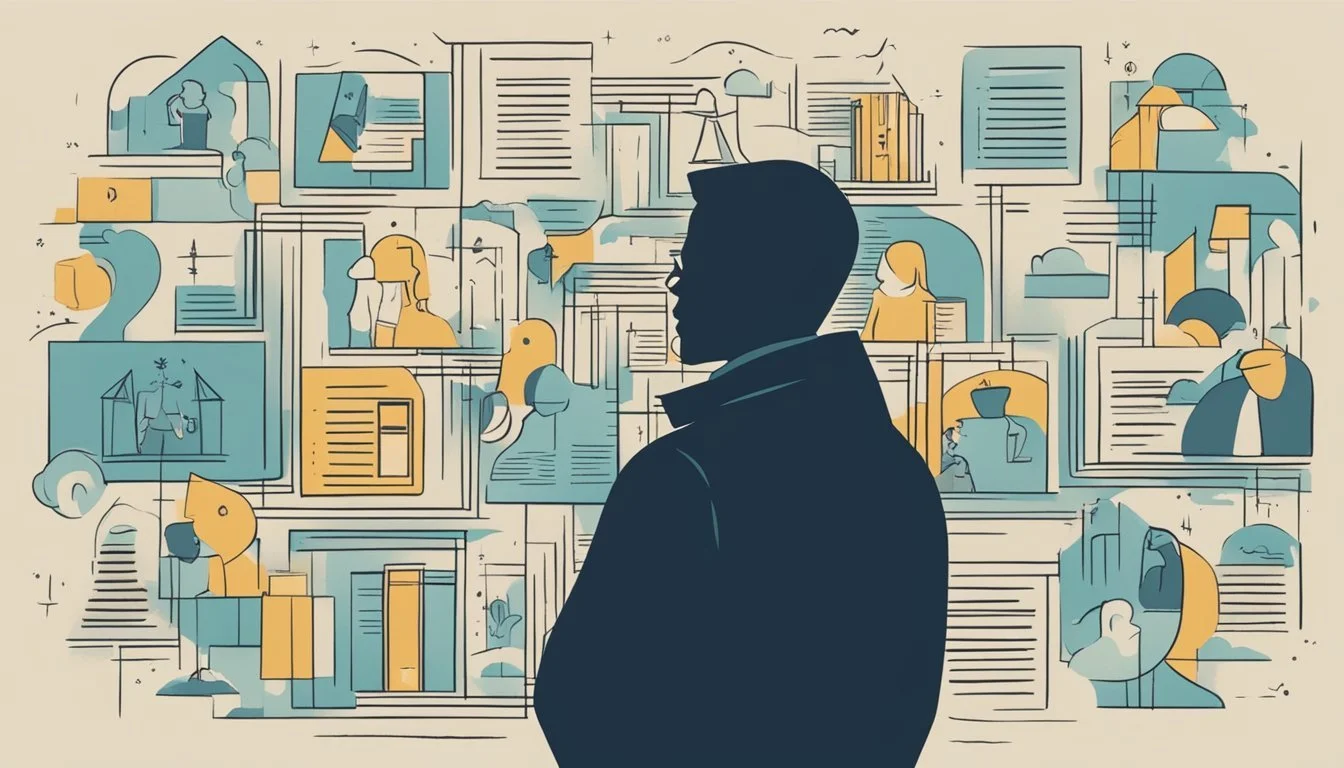Gaslighting 101: Recognizing Synonyms and Signs of Psychological Manipulation
Gaslighting is a form of psychological manipulation that can erode a person's sense of reality and self-worth. This insidious tactic often occurs in relationships where one party seeks to gain power and control over another. Gaslighting involves repeatedly denying, minimizing, or distorting events to make the victim question their own perceptions and memories.
The term "gaslighting" originates from a 1938 play and subsequent film adaptations, but its relevance in modern relationships and social interactions has grown significantly. Recognizing the signs of gaslighting is crucial for maintaining healthy relationships and protecting one's mental well-being.
Gaslighting can manifest in various ways, from subtle questioning of a person's recollection to outright denial of factual events. Common signs include persistent lying, discrediting the victim's feelings, and shifting blame. By understanding these tactics, individuals can better equip themselves to identify and address gaslighting behavior in their personal and professional lives.
Understanding Gaslighting
Gaslighting is a manipulative tactic that erodes a person's sense of reality. It involves psychological manipulation to sow seeds of doubt, making victims question their own memory, perception, and sanity.
Definition and Origin
Gaslighting refers to a form of psychological manipulation where the abuser attempts to sow seeds of doubt in a targeted individual or group. The term originates from the 1938 stage play "Gas Light" and its film adaptations. In the story, a husband manipulates his wife into believing she's going insane.
This tactic aims to destabilize the victim and delegitimize their experiences. Gaslighters often use denial, misdirection, and false information to make their targets doubt their own memory and perception.
Mechanisms and Tactics
Gaslighters employ various techniques to manipulate their victims:
Denial: Refusing to acknowledge facts or events
Countering: Questioning the victim's memory
Trivializing: Minimizing the victim's emotions
Withholding: Pretending not to understand
Diverting: Changing the subject
Forgetting: Claiming to not remember events
These tactics create confusion and self-doubt in the victim. The gaslighter may also use positive reinforcement to further manipulate and control their target.
Psychological Impact on Victims
Gaslighting can have severe effects on mental health. Victims often experience:
• Confusion and self-doubt • Anxiety and depression • Low self-esteem • Difficulty making decisions • Isolation from friends and family
Long-term exposure can lead to complex trauma. Victims may struggle to trust their own judgment and feelings. They might develop a dependence on the gaslighter for reality checks.
Recovery often requires professional help to rebuild self-trust and establish healthy boundaries. Recognizing gaslighting is the first step towards healing and reclaiming one's sense of reality.
Recognizing the Signs
Gaslighting manifests through specific behaviors and patterns that can erode a person's sense of reality. These signs appear in both personal and professional contexts, often following similar themes.
Signs in Personal Relationships
Constant denial of events is a hallmark of gaslighting. The gaslighter may claim conversations never happened or insist on false versions of past incidents. They often trivialize their partner's feelings, dismissing concerns as "overreactions" or "being too sensitive."
Shifting blame is another tactic. The gaslighter refuses to take responsibility, instead accusing their partner of causing problems. They may use phrases like "You're imagining things" or "That's all in your head."
Isolation is a common strategy. The gaslighter attempts to cut off their victim from friends and family, making them more dependent and easier to manipulate.
Signs in Professional Settings
In workplaces, gaslighters may take credit for others' ideas or blame colleagues for their own mistakes. They often spread rumors or false information to undermine coworkers' credibility.
Withholding important details is another sign. Gaslighters may deliberately exclude team members from meetings or crucial emails, then claim it was an oversight.
They frequently change expectations without notice, leaving employees feeling confused and incompetent. This creates a sense of instability and self-doubt among staff.
Common Patterns and Examples
Gaslighters often use specific phrases repeatedly:
"You're being paranoid"
"That never happened"
"You're too emotional"
They may employ love bombing, showering victims with affection after a gaslighting episode to create confusion.
Gaslighters frequently contradict themselves, making it difficult for victims to keep track of what's true. They might deny saying something moments after saying it.
A pattern of escalation is common. What starts as occasional lying may progress to more frequent and severe manipulation over time.
Effects of Gaslighting
Gaslighting can have severe and lasting impacts on individuals and their relationships. Its manipulative nature erodes self-confidence and alters one's perception of reality.
On Individual Well-being
Gaslighting often leads to anxiety and depression in victims. Constant self-doubt becomes pervasive as individuals question their own memories and judgments. They may experience a loss of confidence and struggle to trust their own perceptions.
Victims frequently report feeling confused and disoriented. This mental fog can impair decision-making abilities and daily functioning. Some may withdraw from activities they once enjoyed.
In severe cases, gaslighting can contribute to the development of mental health issues. Victims may experience symptoms of post-traumatic stress disorder (PTSD) or other anxiety disorders.
On Relationships and Trust
Gaslighting damages the foundation of trust in relationships. Victims often become wary of forming new connections, fearing further manipulation or abuse. Existing relationships may suffer as the individual struggles to discern truth from falsehood.
In cases of domestic violence, gaslighting serves as a tool for control. It isolates victims from support systems and makes them dependent on the abuser. This cycle can be difficult to break without outside intervention.
Professional relationships can also be affected. Victims may doubt their competence at work, leading to decreased performance and career setbacks. Trust in colleagues and superiors may be compromised.
Gaslighting in Different Relationships
Gaslighting can occur in various types of relationships, affecting individuals in personal and professional spheres. The tactics and impacts may differ depending on the nature of the connection and power dynamics involved.
Romantic Relationships
In romantic partnerships, gaslighting often manifests through manipulation of shared experiences. A husband or wife may deny events, twist words, or invalidate their partner's feelings. They might say things like "You're remembering it wrong" or "You're too sensitive."
Gaslighters in these relationships may control finances, isolate their partner from friends and family, or use emotional blackmail. They might threaten to leave or withhold affection to maintain power.
The long-term effects can be devastating, eroding self-esteem and creating dependency. Victims may struggle to trust their own perceptions, leading to anxiety and depression.
Family Dynamics
Within families, gaslighting can be particularly damaging due to long-standing emotional ties. Parents might gaslight children by denying abuse or neglect. Siblings may manipulate each other's memories of childhood events.
Common tactics include:
Rewriting family history
Dismissing emotions as overreactions
Using guilt to control behavior
Family members who gaslight often exploit loyalty and obligation. They may leverage shared experiences to cast doubt on the victim's recollections.
The impact can extend into adulthood, affecting future relationships and self-worth. Healing often requires professional help and establishing firm boundaries.
Friendships and Work Relationships
Gaslighting in friendships and professional settings can be subtle but equally harmful. A friend might consistently downplay achievements or mock concerns. Coworkers may undermine confidence by questioning competence or taking credit for ideas.
In the workplace, gaslighting can involve:
Withholding information
Shifting blame
Creating doubt about job performance
These behaviors can lead to decreased productivity, increased stress, and a toxic work environment. Recognizing and addressing gaslighting in these contexts is crucial for maintaining healthy relationships and career growth.
Coping with Gaslighting
Recognizing gaslighting is the first step. Taking action to protect yourself and regain your sense of reality is crucial. Professional help and support networks play key roles in coping with this form of emotional manipulation.
Seeking Professional Help
Therapy can be invaluable for those experiencing gaslighting. A trained therapist can help validate experiences and rebuild self-trust. They provide tools to recognize manipulative behaviors and set healthy boundaries.
Therapists may use cognitive-behavioral techniques to address negative thought patterns resulting from gaslighting. Eye Movement Desensitization and Reprocessing (EMDR) therapy can also help process traumatic experiences.
The National Domestic Violence Hotline offers confidential support and resources. They connect individuals with local professionals experienced in handling emotional abuse.
Building Support Networks
Strong support networks are essential for coping with gaslighting. Trusted friends and family can offer reality checks and emotional support. Sharing experiences with others who have faced similar situations can be validating and empowering.
Support groups, both in-person and online, provide safe spaces to discuss experiences. These groups often share coping strategies and resources.
Maintaining connections outside the gaslighting relationship helps preserve a sense of self. Engaging in activities and hobbies boosts confidence and provides perspective.
Documenting incidents of gaslighting can help counteract memory manipulation. Keeping a journal or confiding in a trusted friend preserves an accurate account of events.
Strategies to Counter Gaslighting
Recognizing gaslighting is the first step in combating it. Implementing effective strategies can help individuals regain control and protect their mental well-being.
Personal Empowerment
Building self-esteem is crucial in countering gaslighting. Individuals should trust their own perceptions and feelings, even when faced with denial or manipulation. Keeping a journal can help document events and validate personal experiences.
Seeking support from trusted friends or family members provides external validation and perspective. Professional therapy can offer tools to process emotions and rebuild confidence.
Practicing self-care and engaging in activities that bring joy and fulfillment can strengthen one's sense of self. Learning about gaslighting tactics empowers individuals to identify and resist manipulation attempts.
Setting Boundaries and Assertiveness
Establishing clear boundaries is essential in dealing with gaslighters. Calmly but firmly communicate personal limits and expectations. Use "I" statements to express feelings and needs without being confrontational.
Avoid engaging in circular arguments or defending oneself excessively. Instead, redirect conversations to focus on specific behaviors and their impact.
Learning assertiveness techniques can help in confronting gaslighting behavior. Practice saying "no" and standing firm in decisions without feeling guilty.
Consider limiting contact or ending relationships with persistent gaslighters if necessary. Prioritize personal well-being and mental health over maintaining toxic connections.
Legal and Societal Aspects of Gaslighting
Gaslighting has significant legal implications and societal impacts. It affects individuals' rights, workplace dynamics, and broader cultural awareness of psychological manipulation.
Understanding Legal Recourse
Gaslighting can constitute emotional abuse, which is recognized in some legal contexts. In workplace settings, persistent gaslighting may create a hostile environment, potentially violating employment laws. Victims may have grounds for harassment claims or constructive dismissal cases.
Legal protections vary by jurisdiction. Some areas have specific laws addressing psychological abuse. Others may treat gaslighting under broader categories of domestic violence or workplace harassment.
Documenting incidents is crucial for legal action. Victims should keep detailed records of gaslighting behaviors, including dates, times, and witness accounts. This evidence can support legal claims and protect against further manipulation.
Gaslighting and Societal Awareness
Public understanding of gaslighting has grown in recent years. Media coverage and educational campaigns have increased recognition of its signs and effects.
This awareness helps victims identify manipulative behaviors more readily. It also encourages support systems and interventions to address gaslighting in various contexts.
Society's perception of gaslighting is evolving. Once dismissed as interpersonal conflict, it's now recognized as a form of abuse. This shift impacts how institutions, from workplaces to courts, approach gaslighting claims.
Educational efforts focus on teaching healthy relationship dynamics and communication skills. These initiatives aim to prevent gaslighting and promote respectful interactions in personal and professional spheres.
Moving Forward After Gaslighting
Recovering from gaslighting requires focused effort to heal and rebuild trust. The process involves self-reflection, support, and practical steps to regain confidence and restore relationships.
Healing and Recovery
Recognizing the impact of gaslighting is the first step toward healing. Victims often benefit from professional therapy to process their experiences and emotions. Journaling can help validate feelings and rebuild self-awareness.
Practicing self-care is crucial. This includes setting boundaries, engaging in enjoyable activities, and surrounding oneself with supportive people. Mindfulness techniques can aid in managing anxiety and rebuilding a sense of reality.
Education about gaslighting empowers survivors. Learning about manipulation tactics helps prevent future occurrences and fosters resilience.
Restoring Self-Trust and Relationships
Rebuilding self-trust takes time and patience. Start by acknowledging personal strengths and accomplishments. Make small decisions independently to regain confidence in judgment.
Engage in honest self-reflection to identify personal values and beliefs. This helps reestablish a strong sense of self.
When rebuilding relationships, clear communication is key. Express feelings and needs assertively. Set firm boundaries and expect respect from others.
Seek relationships that are supportive and validating. Cultivate connections with people who encourage growth and respect personal experiences.
Trust-building exercises can help repair damaged relationships. This may involve open dialogues, shared activities, and consistent follow-through on commitments.





